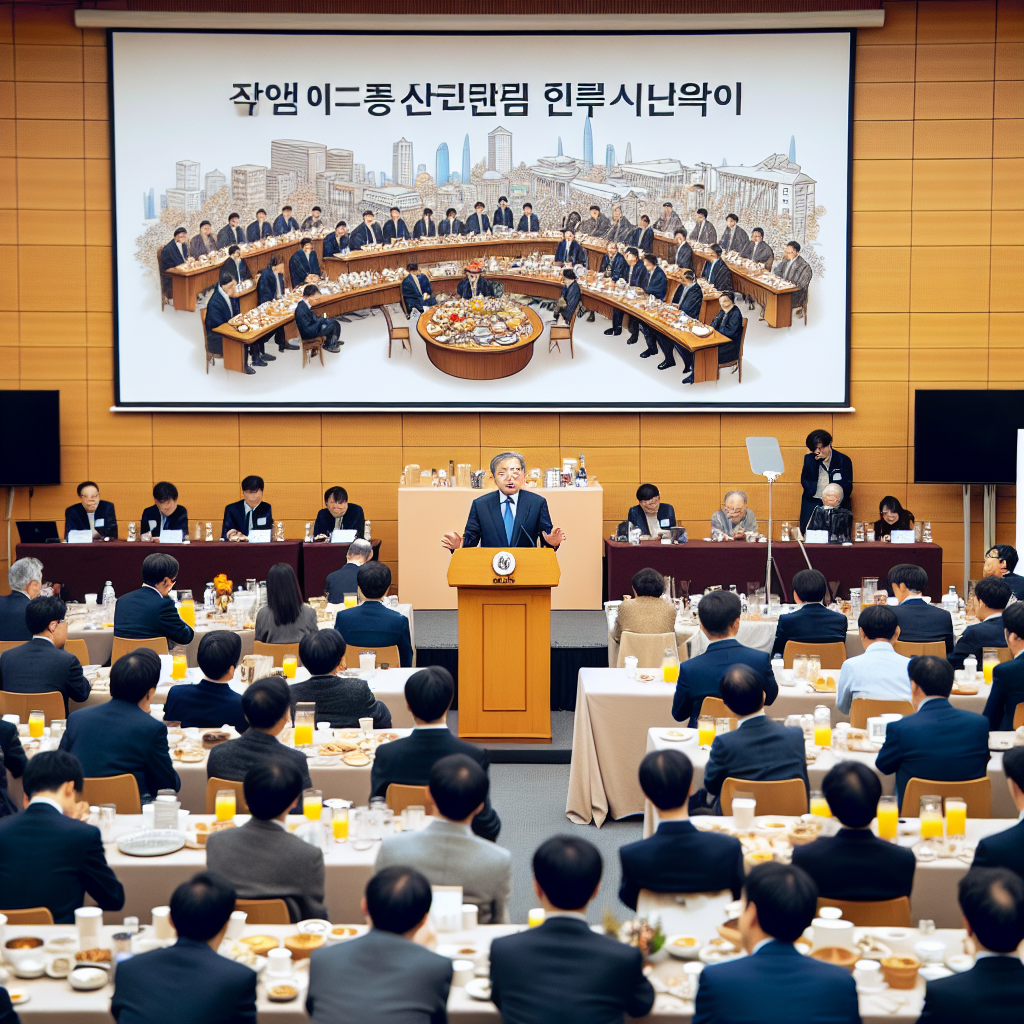Recently, the Deputy Prime Minister of South Korea and Minister of Planning and Finance, Ju Runzhe, was invited to attend a breakfast forum at Seoul National University by the alumni association. In front of nearly 200 scholars and experts, Ju Runzhe detailed the behind-the-scenes of the challenging tariff negotiations with the United States at the beginning of his tenure, emphasizing the strategic importance of South Korea’s alliance with the United States amidst the current competition with China.
Deputy Prime Minister Ju pointed out that in terms of foreign economic policy, faced with the rapid changes and strong pursuit of China, if South Korea chooses to “go it alone”, it is likely to be surpassed comprehensively. Despite South Korea still leading in the shipbuilding industry compared to China, if strategic breakthroughs are not sought, disadvantages will soon become apparent. Therefore, he believes that forming an alliance with the United States is a necessary strategy to prevent China from catching up.
Ju Runzhe revealed the initial chaos of the negotiations. He took office on July 21 of this year (Monday) and was originally scheduled to fly to the United States to meet the Secretary of the Treasury on July 24. However, just before boarding, he received a sudden notification to “not come” because the US side believed that there was not enough time, less than a week before the negotiation deadline on July 31, to reach an agreement.
Deputy Prime Minister Ju decisively decided to “go no matter what”, eventually arriving in the United States within less than ten days of taking office, meeting with the trade representative, and unusually meeting with President Trump at the White House.
He admitted that his biggest concern at the time was that everyone thought he might “go home after working for ten days”, as the US strongly demanded the opening up of agricultural and beef markets. Deputy Prime Minister Ju successfully explained South Korea’s national circumstances to Trump and Lighthizer, ultimately preventing these sensitive agricultural product demands, marking a victory in the first stage of the negotiations.
Deputy Prime Minister Ju described the negotiation process as extremely challenging. The US initially proposed a high amount of $350 billion and threatened with a 25% tariff. Secretary Lighthizer adopted a tough stance during the negotiations, repeatedly pressuring with statements like “then impose tariffs, we’ll stop here.”
Initially, the US requested South Korea to pay $350 billion in cash within three and a half years like Japan (agreeing to pay $550 billion in cash). Deputy Prime Minister Ju explained to Treasury Secretary Mnuchin that South Korea’s foreign exchange reserves were only $420 billion and if $350 billion was taken out, it would immediately trigger a forex crisis. Finally, after communication between Mnuchin and the President, significant changes occurred in the proposed deal:
1. Cash payment cap: The finally agreed cash payment portion was reduced to around $200 billion (compared to Japan’s $550 billion).
2. Funding purpose linked: The remaining $150 billion was to be invested directly in the US in the form of Foreign Direct Investment (FDI).
Regarding the $200 billion cash payment portion, Deputy Prime Minister Ju disclosed that the government and the US engaged in repeated explanations and negotiations, insisting that “the maximum can only be $20 billion” as an annual limit. This $20 billion would not be paid in a simple manner but would be executed based on project progress, and both sides agreed that if the South Korean forex market became unstable, this upper limit would also be correspondingly reduced to minimize the impact on South Korea’s forex market.
Deputy Prime Minister Ju believed that targeting the $150 billion in the FDI sector, especially in the shipbuilding industry, was a strategic opportunity. Since the decline of the US shipbuilding industry after the 1960s, there is an urgent need for its revitalization. South Korea will actively leverage this alliance opportunity to prevent China from catching up in the shipbuilding industry with the aid of the US.
Furthermore, the remaining $200 billion will also be utilized in areas of interest to the US, such as energy (including nuclear power), AI, biotechnology, and lithium-ion batteries. Deputy Prime Minister Ju pointed out that fortunately, in these high-tech fields, South Korea is more competitive than Japan. If this funding is cooperatively utilized with the US, it will help South Korea bring back the core industries’ manufacturing forms from the global value chain. To address concerns about declining domestic investment due to industrial reshoring, the government also plans to establish a National Sovereign Fund (Nation Wealth Fund).
Ju Runzhe graduated from the Department of Economics at Seoul National University and holds a master’s degree in Public Administration from Seoul National University, a master’s degree in Public Policy from the University of Wisconsin, and a PhD in Business Administration from Chung-Ang University. He has held positions such as Blue House Secretary of Personnel System and Director of State Coordination Office, and officially took office as Deputy Prime Minister of Economy and Minister of Planning and Finance on July 21 of this year.

